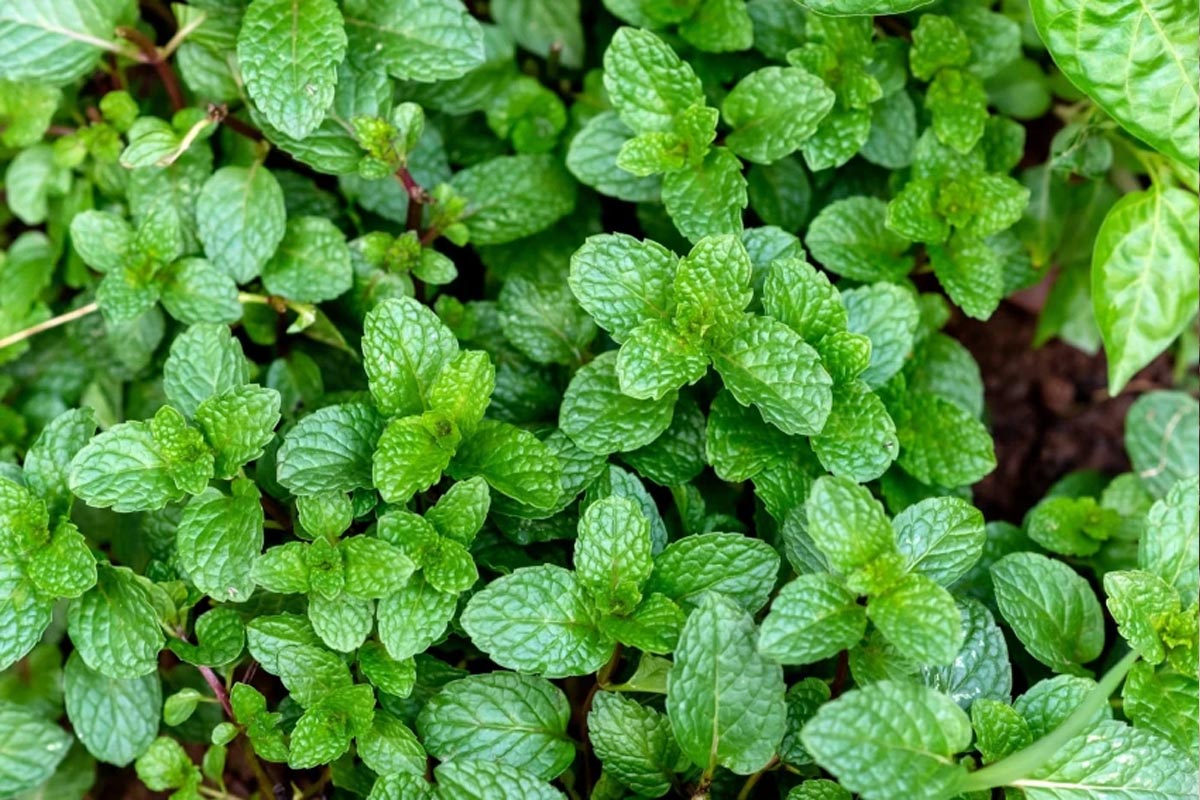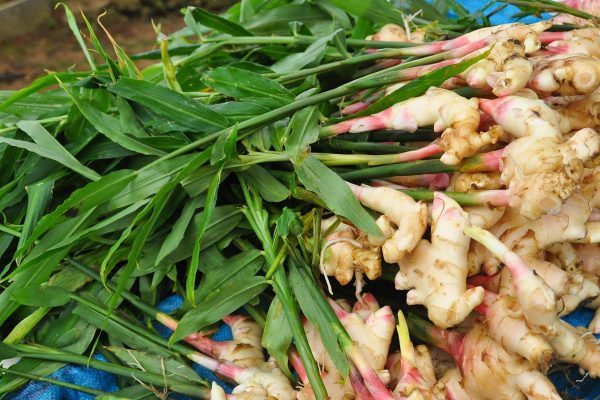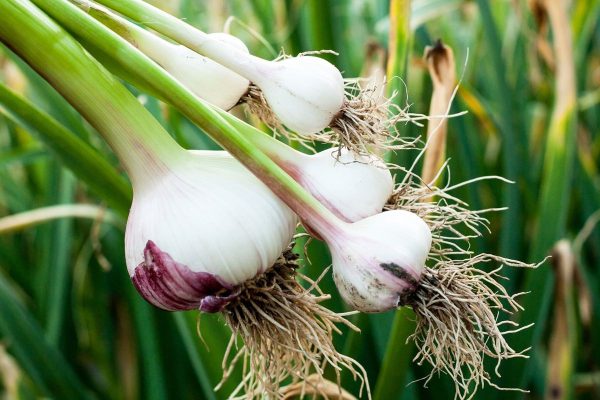Plants
Mint
Introduction / परिचय
Mint, commonly known as "Pudina" in many regions, is a fragrant and versatile herb cherished for its refreshing flavour and culinary and medicinal applications. This herb, with its vibrant green leaves and distinctive aroma, is a popular addition to salads, chutneys, teas, and an array of dishes. Mint is esteemed for its digestive properties and soothing qualities, often used in herbal remedies and aromatherapy. It's a hardy, fast-growing plant that thrives in gardens and containers, making it accessible for both seasoned gardeners and beginners. With its delightful taste and numerous benefits, mint is a cherished herb that continues to enhance culinary experiences and well-being.
Also Read This : How to Grow Sunflower from Seeds At Home
| English Name: | Mint |
| Hindi Name: | पुदीना (Pudina) |
| Scientific Name: | Mentha |
| Family: | Lamiaceae |
| Kingdom: | Plantae |
| Light : | Full sun to partial shade |
| Height: | 1 to 4 feet |
| Flower Color : | pale purple, pink, or white |
| Leaves Color : | Green, Dark Green , Muted, Granny smith green |
| Eason Features : |
Also Read This : Greening Your Home: The Benefits of Indoor Plants
When to Plant Mint
Mint (Mentha) is a hardy and fast-growing herb best planted in the spring, after the last frost date for your region. Planting mint in the spring allows it to establish itself during the growing season and thrive. Here's a general guideline for planting mint:
Wait for Frost-Free Conditions
Mint is sensitive to cold temperatures, so it's essential to plant it when the risk of frost has passed. The exact timing varies depending on your location and local climate. Typically, in most regions, this means planting in late spring or early summer.
Choose a Sunny Location
Mint prefers a location with partial to full sunlight. While it can tolerate some shade, it will grow more vigorously and produce more aromatic leaves in a sunnier spot.
Prepare the Soil
Mint thrives in well-draining, slightly acidic to neutral soil. Work organic matter into the soil to improve its texture and fertility.
Plant Mint Cuttings or Seedlings
You can plant mint from cuttings or seedlings. To plant mint:
- If using cuttings, take 4-6 inch sections of healthy mint stems, remove the lower leaves, and plant them in well-prepared soil, leaving a few inches between each cutting.
- If using seedlings, plant them at the same depth they were growing in their nursery pots.
Space Mint Plants
Mint is a vigorous spreader, so give each plant ample space, about 18-24 inches apart, to prevent overcrowding.
Water Thoroughly
After planting, water your mint thoroughly to help settle the soil around the roots.
Mulch
Applying a layer of mulch around your mint plants can help conserve soil moisture and reduce weed growth.
Regular Watering
Mint prefers consistently moist soil, so keep the soil evenly moist, but be careful not to overwater, which can lead to root rot.
Harvest Sparingly
You can start harvesting mint leaves once the plant has established and grown a bit. However, only gather up to one-third of the plant at a time to allow it to continue growing.
Flowering time of Mint
Mint, a popular and aromatic herb, is known for its rapid growth and tendency to produce clusters of small, tubular flowers. The flowering time of mint largely depends on the specific type or variety and local climate conditions. Typically, mint plants begin flowering in the late spring to early summer. However, it's important to note that allowing mint to flower can sometimes lead to a reduction in its essential oil content, which is responsible for its intense flavour. To maintain the best flavour and prevent the mint from spreading excessively, gardeners often prune or harvest the leaves before the plant reaches the flowering stage, encouraging robust growth and a more prolonged harvest.
Also Read This : Easy way to grow Strawberry at Home
Varieties / किस्मे
Mint is a diverse and aromatic herb with various species and cultivars, each offering unique flavour and characteristics. Here are some common varieties of mint plants:
Peppermint (Mentha × Piperita)
Known for its robust and cooling flavour, peppermint is widely used in culinary and medicinal applications. It's often used in teas, desserts, and as a flavouring agent.
Spearmint (Mentha spicata)
Spearmint has a milder, sweeter taste than peppermint. It's a popular choice for beverages like mojitos and mint juleps and is used in cooking and for garnishes.
Chocolate Mint (Mentha × piperita f. citrata)
This variety has a delightful chocolate-like aroma and flavour. It's used in desserts, beverages, and herbal teas.
Apple Mint (Mentha suaveolens)
As the name suggests, apple mint offers a subtle apple-like flavour and aroma. It's suitable for both culinary and decorative purposes.
Orange Mint (Mentha citrata)
Orange mint has a citrusy, orange-like scent and flavour, making it an excellent choice for herbal teas and garnishes.
Lemon Balm (Melissa officinalis)
While not an actual mint, it is often included in the mint family due to its similar growth habit. It has a lemony scent and is used for teas and culinary applications.
Mojito Mint (Mentha × villosa)
This mint variety is the traditional choice for crafting the classic mojito cocktail, featuring a robust and refreshing flavour.
Pineapple Mint (Mentha suaveolens 'Variegata')
With a pineapple-like aroma, this mint variety is used for teas and as a garnish for fruit salads and desserts.
Ginger Mint (Mentha × gracilis)
As the name implies, ginger mint offers a subtle ginger undertone to its minty flavour. It's suitable for culinary use and beverages.
Corsican Mint (Mentha requienii)
Corsican mint is a low-growing, creeping variety with a strong peppermint aroma. It's often used as a ground cover and for its fragrance.
Water Mint (Mentha aquatica)
Found near water bodies, water mint has a milder flavour and is sometimes used for making herbal teas.
These are just a few examples of the many mint varieties available. Mint's versatility, refreshing taste, and aromatic qualities make it a delightful addition to culinary and ornamental gardens.
Also Read This : 12 Delicious and Nutritious Herbal Teas to Boost Your Health
Classification of Plants/ पौधों का वर्गीकरण
Mint, a diverse and aromatic herb, belongs to the Mentha genus, encompassing many species and varieties. Some standard classifications of mint plants include:
Peppermint (Mentha x piperita)
Known for its strong peppery flavour and high menthol content, peppermint is widely used in teas, confections, and aromatherapy.
Spearmint (Mentha spicata)
With a milder, sweet flavour and a characteristic speared leaf shape, spearmint is often used in culinary applications, such as mint sauces and jellies.
Chocolate Mint (Mentha x piperita 'Chocolate')
This variety features a chocolatey undertone in its flavour and aroma, making it a unique addition to desserts and beverages.
Apple Mint (Mentha suaveolens)
Apple mint has a subtle apple scent and is commonly used for making herbal teas and garnishes.
Corsican Mint (Mentha requienii)
Known for its compact size and firm, creeping growth, it is often used as a ground cover and emits a pleasant minty fragrance when crushed.
Lemon Balm (Melissa officinalis)
While not an actual mint, lemon balm belongs to the mint family (Lamiaceae) and has a lemony flavour and fragrance. It's used in teas, culinary dishes, and herbal remedies.
Also Read This : 10 Summer Solutions: How to Safeguard Your Balcony Garden from Heat Stress and More
History / इतिहास
Mint, known as "pudina" in some regions, has a rich history dating back thousands of years. Its origins are traced to the Mediterranean, and it was highly valued in ancient Greek and Roman cultures for its culinary and medicinal uses. Mint spread to various parts of the world through trade routes and human migrations. In medieval Europe, it was cultivated in monastery gardens. Mint's refreshing flavour led to its widespread use in teas, beverages, and culinary dishes. Today, mint is grown globally, with a diverse range of varieties, each offering unique flavours and fragrances, making it a beloved herb in many cultures and cuisines.
Also Read This : Discover the Secrets to Growing Beautiful Cardamom Plants!
Uses and Benefits / उपयोग एवं फायदे
Mint plants, with their refreshing aroma and versatile properties, offer a wide range of uses and benefits. Their leaves, whether spearmint, peppermint, or other varieties, are widely employed in culinary applications, enhancing dishes, beverages, and desserts. Mint is prized for its digestive and soothing qualities, often brewed into tea to relieve indigestion and headaches. It also boasts antimicrobial and antioxidant properties, promoting overall health. Mint's essential oils are utilized in aromatherapy for relaxation and mental clarity. Additionally, mint plants serve as natural pest repellents in gardens and homes, deterring insects. Their rapid growth makes them easy to cultivate, ensuring a readily available supply.

Also Read This : Rubber Plants: A Beginner’s Guide to Growing and Maintaining Them
How to Grow Plant / कैसे उगाएं
Growing mint (Mentha) is a straightforward and rewarding endeavour. To cultivate this aromatic herb, choose a well-draining location with partial sunlight. Mint thrives in various soil types—plant mint from either seeds or cuttings in the spring or fall. Ensure proper spacing, as mint tends to spread rapidly. Regular watering is essential to keep the soil consistently moist. Pruning mint encourages bushy growth and prevents it from becoming invasive. Mint can be grown in pots or containers, which helps control its spread. With minimal care, you can enjoy a bountiful supply of fresh mint leaves, ideal for culinary and medicinal purposes.

Also Read This : 3 Method to Grow Mint (Pudina) at Home
How to Take Care/ देखभाल कैसे करे
Mint plants (Mentha) are fragrant, fast-growing herbs that thrive with proper care. To nurture mint effectively, plant it in well-draining soil with ample sunlight or partial shade. Keep the soil consistently moist but not waterlogged, ensuring adequate drainage. Pruning is essential to maintain the plant's shape and encourage fresh growth; trim regularly and remove wilted leaves. Mulching can help retain moisture and suppress weeds. Mint is a vigorous spreader, so consider growing it in containers or installing barriers to prevent it from taking over your garden. With these steps, you can enjoy a thriving and fragrant mint plant in your herb garden.
Also Read This : 2 Method to Grow Ginger (Adrak) at HomeInteresting Facts / रोचक तथ्य
Mint plants belonging to the Mentha genus are known for their refreshing qualities and have intriguing facts:
Diverse Varieties
There are over 30 species and numerous hybrids of mint, each with distinct flavours and scents.
Invasive Nature
Mint's vigorous growth can make it invasive in gardens. Planting it in containers can help control its spread.
Ancient Herb
Mint has a storied history, with references dating back to Greek and Roman times, where it was used for culinary and medicinal purposes.
Aromatic Defense
Mint's strong aroma can repel insects, making it a natural pest deterrent.
Minty Molecule
The compound responsible for mint's flavour, menthol, triggers cold-sensitive receptors in the skin, creating a cooling sensation.
Culinary Versatility
Mint leaves are used in various dishes, from salads and desserts to beverages like mint tea and mojitos.
Medicinal Benefits
Mint has been used for its digestive and soothing properties, aiding in alleviating indigestion and headaches.
Symbolic Meanings
In various cultures, mint symbolizes hospitality, wisdom, and virtue and is a common ingredient in traditional ceremonies and rituals.
Mint's versatility and historical significance make it an intriguing and valuable herb.
Also Read This : How To Grow Gazania Flower at Home




